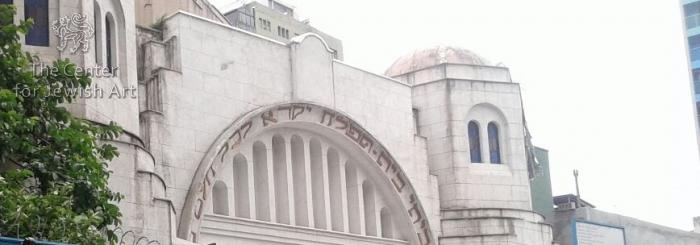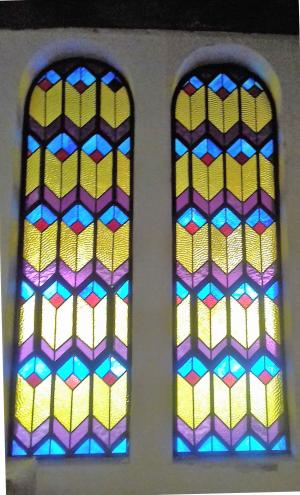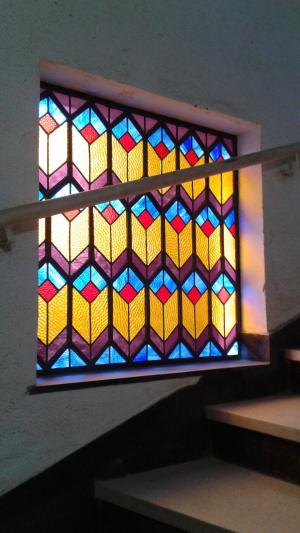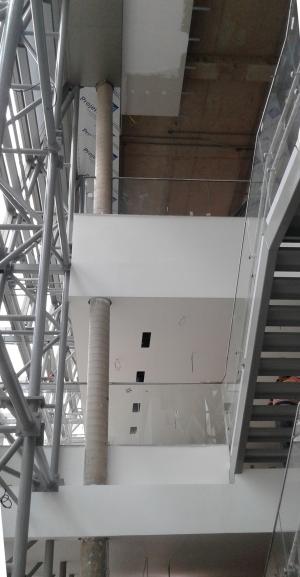Obj. ID: 31270
Jewish Architecture Templo Beth-El and Jewish museum in São Paulo, Brazil

The following information was researched by Myriam Rosenblit Szwarcbart.
Congregação Israelita Askenazi (Ashekenazi Israelite Community) was founded on June 2, 1920, and ordered the building from Samuel Roder (born in Kiev, 1896-1985) in 1928. The foundation stone was laid on December 16, 1928. The building was inaugurated in 1929, the first prayers took place in 1932. The design of Samuel Roder was probably inspired by the Tifereth-Israel Temple, located in Cleveland, Ohio, designed by Charles Greco. The original design was more elaborated than a synagogue built.
The architect himself defined the style as "Byzantine, traditional and oriental". The building is seven-sided, this shape is also applied to the synagogue towers. The facades are decorated with narrow arched windows and stained glass. Since 2013, the synagogue is a listed building.
The building undergoes the renovation and will host the “São Paulo Jewish Museum” from 2019. The project was developed by “Botti Rubin Arquitects” (Simoni Waldman Saidon and Mauro Martins), a winner of the contest titled "Modernity and Preservation". According to the project, elements of Samuel Roder's original project will be restored and integrated into the modern building of the museum/
At the moment, the Beth-El community has its headquarters at Rua Caçapava 105, Jardins.












